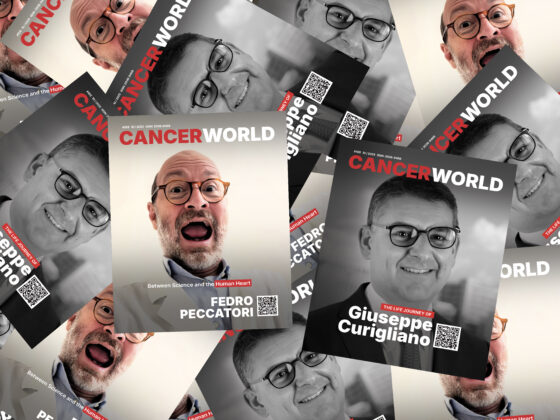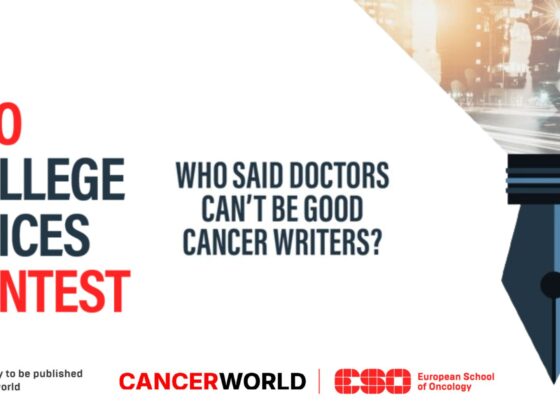Twenty-seven species of bacteria and fungi among the hundreds that reside in human mouths have been collectively linked to people having a 3.5 times greater risk of developing pancreatic cancer. Among these, the study, published online in JAMA Oncology, 18 September, identified three kinds of bacteria associated with periodontal disease.
“Our study provides concrete scientific evidence that oral bacteria and fungi play an important role in the development of pancreatic cancer,” Jiyoung Ahn, the co-senior author, from NYU Grossman School of Medicine, New York, tells CancerWorld.
Addressing the clinical significance of the findings, co-senior author Richard Hayes adds, “By profiling bacterial and fungal populations in the mouth, oncologists may be able to flag those most in need of pancreatic cancer screening.”
While smoking, obesity, pancreatitis, and genetics are known to be risk factors for pancreatic cancer, these causes explain less than 30% of all pancreatic cancers. “To reduce the pancreatic cancer burden, there is a critical need to improve scientific knowledge on the specific causes of this disease and to provide guidance for preventive measures,” write Ahn, Hayes, and colleagues.
Experts have long observed that people with poor oral health are more vulnerable to developing pancreatic cancer (and also head and neck cancers) than those with healthier mouths. In 2018, in a study published in Gut, Ahn and colleagues demonstrated using 16S ribosomal RNA amplicon sequencing to measure bacteria in oral samples that the presence of P. gingivalis was associated with pancreatic cancer. Then last year, a different team of investigators, led by Gabriel Nussbaum, were able to show in a study published in Gut, that in mouse models, radiolabelled P gingivalis can travel directly from the mouth to the pancreas. Nussbaum and colleagues went on to show induction of pancreatic metaplasia through repetitive administration of the bacterium, and that exposure accelerated progression from pancreatic intraepithelial neoplasia to adenocarcinoma.
With existing evidence based on low-resolution 16S ribosomal RNA-based microbiome profiling, Ahn and colleagues set out to achieve high-resolution bacterial species quantification using whole genome sequencing to pinpoint more specific species associated with pancreatic cancer. “In our earlier study, there were technical limitations as we were only doing partial sequencing, looking at approximately 500 bacterial fragments in the 16S gene. Advances in technology have allowed us to undertake whole genome sequencing of all the bacteria and fungi in the mouth,” explains Ahn.
For the prospective nested case control study, the team assessed data from two ongoing investigations (the American Cancer Society Cancer Prevention Study-II Nutrition Cohort and the Prostate, Lung, Colorectal, and Ovarian Cancer Screening Trial) that had been established to track people across America in order to help better understand how diet, lifestyle, medical history, and many other factors are involved in cancer development. Shortly after enrolment, participants rinsed their mouths with mouthwash to provide ‘spit’ samples that were preserved to provide opportunities for investigating the types and number of microbes at a later date. Researchers then followed participants for an average of nine years, verifying incident cancers through medical records, state cancer registries, or death certificates.
Of the 122,000 cohort participants providing ‘spit’ samples, the team identified 445 subjects who went on to be diagnosed with histologically confirmed incident primary pancreatic adenocarcinoma. For comparison, 455 control subjects (without pancreatic cancer) were 1:1 frequency matched based on coming from the same cohort, being within the same five-year age band, having the same sex, race, and ethnicity, and the same time since collection of the ‘spit’ sample.
For both cancer patients and controls, the oral bacterial and fungal microbiome were profiled using whole-genome shotgun sequencing and internal transcribed spacer (ITS) sequencing, respectively. Associations between pancreatic cancer and periodontal pathogens were evaluated using logistic regression, with investigators accounting for factors known to play a role in developing the condition, such as age, race, and smoking habits. The bacterial and fungal taxa between pancreatic cancer patients and control participants were then compared.
Since the link between periodontal disease and pancreatic cancer had already been identified (see below), the team focused first on the association (via logistic regression) of pathogens known to be associated with periodontal disease. These were periodontal pathogens of the red complex (Treponema denticola, Porphyromonas gingivalis, and Tannerella forsythia) and orange complex (Fusobacterium nucleatum, Fusobacterium periodonticum, Prevotella intermedia, P nigrescens, Parvimonas micra, Eubacterium nodatum, Campylobacter showae, and Capnocytophaga gracilis).
Results showed:
- Three oral bacterial periodontal pathogens were associated with increased risk of pancreatic cancer—P gingivalis (OR, 1.27; 95% CI, 1.03-1.57); E nodatum (OR 1.42, 95% CI 1.14-1.76); and P micra (OR, 1.36; 95% CI, 1.09-1.70).
- In a bacteriome-wide scan, the researchers pinpointed another 20 oral bacteria associated with pancreatic cancer — 13 with an increased risk of the disease and eight with a decreased risk.
- With regard to the fungal microbiome, the genus Candida was identified as a risk factor for pancreatic cancer, including Candida tropicalis (1.43-fold, 95% CI 1.00-2.03) and unspecified Candida (1.34-fold, 95% CI 1.05-1.70).
- Since multiple microbes associated with risk emerged in the study, the team developed a Microbial Risk Score (MRS) that included the presence and abundance 27 oral species that had been identified as relevant (23 bacterial species and 4 fungal species) to provide each individual with a ‘risk profile’ based on their oral microbiome. When applying the score, they showed that people with high-risk microbial profiles were more than three times more likely to develop pancreatic cancer in comparison to those with low scores (multivariate odds ratio per 1-SD increase in MRS, 3.44; 95% CI, 2.63-4.51).
“Collectively, the oral microbiome community may exert systemic effects on pancreatic cancer, with oral microbial dysbiosis [imbalance of the microbiome] contributing an etiological link between oral health status and pancreatic cancer development,” conclude the authors.
The associated microbial risk score, they add, offers a promising tool to identify individuals at high risk of pancreatic cancer who would benefit from screening. The findings, adds Ahn, underscore the importance of good oral health and regular dental checkups to prevent development of pancreatic cancer.
In the future, probiotics containing beneficial bacteria could be developed to promote a healthy microbiome. “But already, there are a lot of people who can do. Stopping smoking and avoiding heavy alcohol use both have a beneficial effect on the microbiome,” says Ahn.
Next, the team hope to investigate the pancreatic tumour microbiome (using surgical samples) and explore how its composition relates to the oral microbiome and responses to treatment
The connection between oral microbes and cancer also applies to head and neck cancers. In a parallel nested case-controlled study, published last year in JAMA Oncology, Ahn, Hayes, and colleagues showed (using the same patient cohorts) that 13 oral bacterial species were differentially associated with the development of squamous cell cancer head and neck cancers. Interestingly, in this case, no significant associations were found between fungal species and subsequent head and neck cancers.
Independent Expert Comment
Epidemiologist Dominique Michaud, who has long studied periodontal disease and pancreatic cancer links, commented on the findings for CancerWorld. Michaud, from the Department of Public Health & Community Medicine, Tufts University School of Medicine, Massachusetts, is the author of a number of papers exploring the link between periodontal disease and pancreatic cancer, including one of the first studies on this topic, published in J Natl Cancer Inst in 2007, and a study reporting an association between antibodies to periodontal disease pathogens and risk of pancreatic cancer, published in Gut in 2013.

Could you comment on the overall significance of the study and what you see as the clinical significance of the findings?
There are still many questions about the causal role of bacteria and fungi in gastrointestinal cancers. The findings from this study suggest there are associations between certain oral bacteria and fungi and the risk of pancreatic cancer, but these may be reflecting periodontal disease conditions and overall immune response, and may not be causal. It is too soon to apply these findings to a clinical setting for early detection or to determine who is at higher risk; much more work is needed for these next steps. I do not think it is time to start taking probiotics to address these issues. I agree that people need to make oral health a priority to reduce the risk of developing periodontal disease, which is known to be linked to numerous chronic diseases.
What do you see as the unanswered questions arising from the study, and what further research would you like to see undertaken?
Other observational studies will need to replicate the microbial risk score developed in this study. One study is not sufficient to determine whether a new score can be useful in a clinical setting and it is premature to suggest this could be used as a tool for early detection of pancreatic cancer given that many people with periodontal disease (prevalence 50% or more) will have these bacteria present in their saliva, whereas very few people develop pancreatic cancer (age-adjusted incidence rate is 5 per 100,000 people). While the results from this new study are compelling, and will certainly motivate future research on the topic, I am uncertain whether we will be able to rely solely on saliva to identify high-risk individuals.












